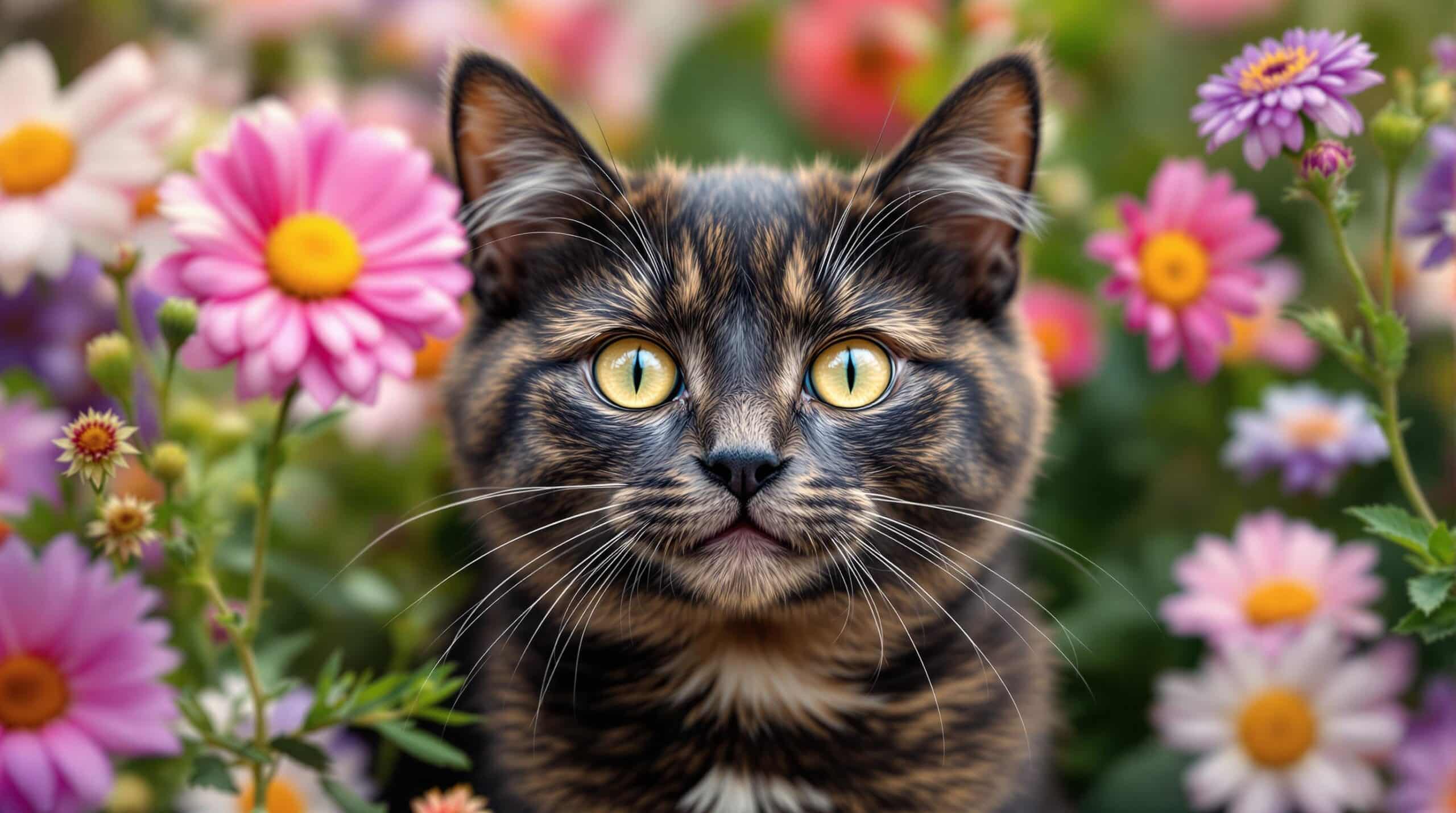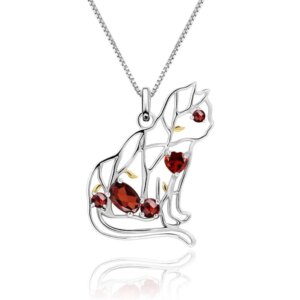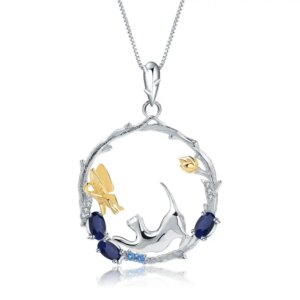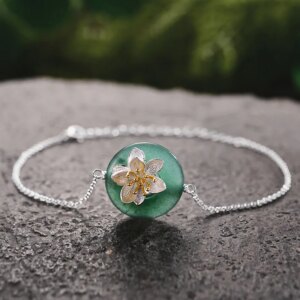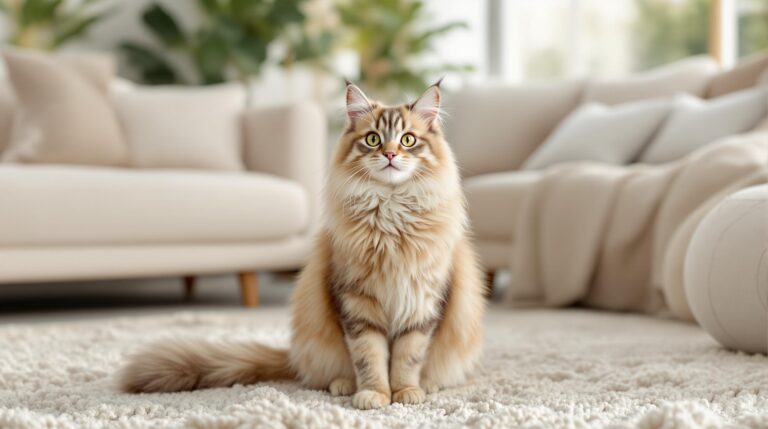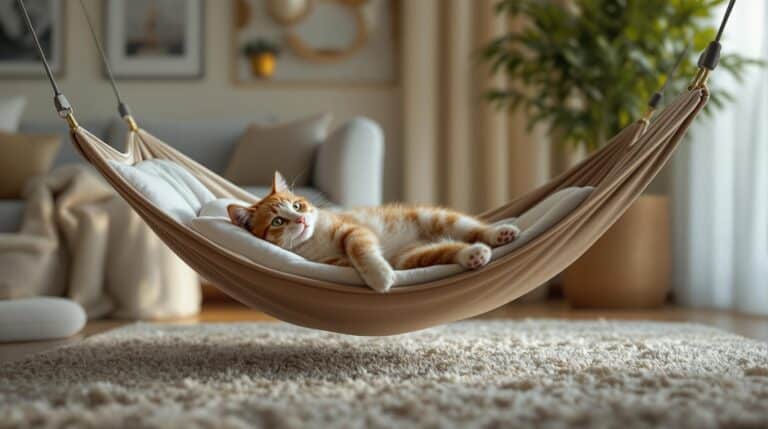Cats in heat can be a challenging and stressful experience for both cats and their owners. At Cat Karma Creations, we understand the importance of providing comprehensive information and practical tips to help you navigate this crucial aspect of cat ownership. This guide offers a detailed overview of the cat heat cycle, including signs, symptoms, and management strategies. By understanding the physiological and behavioral changes that occur during this period, you can provide the best care for your feline companion.
What is a Cat in Heat?
Definition of Heat Cycle
The term cats in heat refers to the period when female cats are sexually receptive and can become pregnant. This is also known as the estrous cycle. During this time, a female cat’s body undergoes hormonal changes that prepare her for mating and potential pregnancy. Understanding the cat heat cycle is crucial for cat owners, as it can help them provide better care and support for their pets.
Frequency and Duration of Heat Cycles
The frequency and duration of heat cycles can vary between individual cats. Typically, a cat will go into heat every 2 to 3 weeks during the breeding season, which usually occurs in the spring and summer months. Each heat cycle can last anywhere from 4 to 7 days, but some cats may remain in heat for up to 14 days. It’s important to note that cats can go into heat multiple times a year, and some may even experience continuous heat cycles if they are not spayed. At Cat Karma Creations, we recommend consulting with a veterinarian to discuss the best options for managing your cat’s heat cycles.
Signs and Symptoms of a Cat in Heat
Behavioral Changes
Cats in heat exhibit a range of behavioral changes that can be noticeable to their owners. These changes include increased vocalization, restlessness, and a heightened level of affection towards humans and other pets. Some cats may also display more aggressive behavior or become more clingy. Understanding these cat heat behavior changes can help you recognize when your cat is in heat and take appropriate measures to manage her symptoms. If you have any concerns or need additional support, feel free to contact us at info@catkarmacreations.com or visit our website at Cat Karma Creations.
Physical Indicators
In addition to behavioral changes, there are several physical indicators that can help you identify when a cat is in heat. These include swelling of the vulva, a clear discharge, and sometimes bleeding. Some cats may also exhibit a distinctive posture, known as “lordosis,” where they lower their front end and raise their hindquarters. These cat in heat signs can vary between individual cats, so it’s important to observe your cat closely and note any changes in her behavior or physical appearance. If you need more information or assistance, you can reach out to us at our contact form.
Vocalization and Restlessness
One of the most common signs of a cat in heat is increased vocalization. Cats in heat may meow more frequently and loudly, especially at night. This vocalization is often a call to attract male cats and can be quite disruptive. Additionally, cats in heat may become more restless and may pace around the house or try to escape to find a mate. These cat in heat vocalization and restlessness can be distressing for both the cat and the owner, making it essential to find ways to manage these symptoms. For more tips and advice, follow us on Facebook or Instagram.
Managing a Cat in Heat
Home Remedies and Natural Solutions
There are several home remedies and natural solutions that can help calm a cat in heat and provide temporary relief. These include using pheromone sprays, which can help reduce stress and anxiety, and providing calming supplements such as chamomile or valerian root. Creating a calm and comfortable environment with plenty of hiding places and soothing music can also help. These cat in heat home remedies can be effective in managing the symptoms of a cat in heat, but they are typically only a short-term solution. If you need personalized advice, feel free to reach out to us at sales@catkarmacreations.com.
Veterinary Care and Treatment Options
In some cases, veterinary care may be necessary to manage the symptoms of a cat in heat. This can include prescription medications to reduce hormonal activity or to provide relief from physical discomfort. Your veterinarian can also provide advice on spaying your cat, which is the most effective way to prevent heat cycles and unwanted litters. If your cat is showing severe symptoms or if you have concerns about her health, it’s important to seek cat in heat treatment from a qualified veterinarian. For more information on our products and services, visit Cat Karma Creations.
Creating a Comfortable Environment
Creating a calm and comfortable environment is essential for managing a cat in heat. This can include providing a quiet, private space for your cat to retreat to, as well as ensuring that she has access to clean litter boxes and fresh water. Using calming aids such as pheromone diffusers or soft music can also help reduce stress and anxiety. Additionally, spending extra time with your cat and providing gentle petting and reassurance can help her feel more secure and relaxed. For additional tips and resources, follow us on Pinterest.
Preventing Unwanted Litters
Spaying and Neutering Benefits
Spaying and neutering are the most effective methods for preventing unwanted litters and reducing the frequency of heat cycles in cats. Spaying a female cat involves removing her reproductive organs, which eliminates the risk of pregnancy and the associated health risks. Neutering a male cat involves removing his testicles, which can help reduce aggressive behavior and the urge to roam. Both procedures have long-term health benefits, such as reducing the risk of certain cancers and infections. Spaying and neutering are safe and routine procedures that can significantly improve the quality of life for both cats and their owners. At Cat Karma Creations, we strongly recommend considering these procedures to ensure the well-being of your feline companion.
Alternative Prevention Methods
While spaying and neutering are the most reliable methods for preventing unwanted litters, there are other options available. These include using hormonal medications to suppress the heat cycle or keeping male and female cats separate during the breeding season. However, these methods are not as effective as spaying and neutering and may have side effects. It’s important to discuss the best prevention method with your veterinarian to ensure that it is safe and appropriate for your cat. For more information on our cat-themed jewelry and gifts, visit Cat Karma Creations.
Long-term Health Benefits
Spaying and neutering not only prevent unwanted litters but also provide long-term health benefits for cats. Spaying can reduce the risk of uterine infections and certain types of cancer, while neutering can reduce the risk of testicular cancer and prostate problems. These procedures can also help reduce the risk of behavioral issues such as spraying and aggression. By spaying or neutering your cat, you are not only ensuring her long-term health but also contributing to the overall well-being of the feline population. For more information on our commitment to feline welfare, visit our website at Cat Karma Creations.
Comparison of Cat in Heat Management Methods
When it comes to managing a cat in heat, there are several options available, each with its own advantages and disadvantages. The following table compares the effectiveness, cost, side effects, ease of use, and long-term benefits of spaying and neutering, home remedies, and veterinary care.
| Aspect | Spaying and Neutering | Home Remedies | Veterinary Care |
|---|---|---|---|
| Effectiveness | High | Moderate | High |
| Cost | Moderate to High | Low | High |
| Side Effects | Minimal | None to Minimal | Minimal |
| Ease of Use | Requires Professional | Easy | Requires Professional |
| Long-term Benefits | Prevents Unwanted Litters, Reduces Heat Cycles | Temporary Relief | Prevents Unwanted Litters, Reduces Heat Cycles |
Popular Quote
“A cat has absolute emotional honesty; human beings, for one reason or another, may hide their feelings, but a cat does not.” – Ernest Hemingway
Statistical Fact
According to the American Society for the Prevention of Cruelty to Animals (ASPCA), an estimated 3.2 million cats enter U.S. animal shelters each year. Spaying and neutering can significantly reduce the number of unwanted litters and help control the feline population. This statistic highlights the importance of responsible pet ownership and the benefits of spaying and neutering your cat. (Source: ASPCA, 2021)
Three Tips for Managing a Cat in Heat
- Provide a Comfortable Space: Create a quiet, private area for your cat to retreat to during her heat cycle. This can help reduce stress and provide a sense of security.
- Use Pheromone Diffusers: Pheromone diffusers can help calm your cat and reduce anxiety. These products mimic the natural pheromones that cats produce, creating a soothing environment.
- Consult Your Veterinarian: If your cat is showing severe symptoms or if you are concerned about her health, consult a veterinarian. They can provide advice on spaying or other treatment options to manage the heat cycle effectively.
Popular Questions About Cats in Heat
- How often do cats go into heat? Cats typically go into heat every 2 to 3 weeks during the breeding season, which usually occurs in the spring and summer months.
- Can I prevent my cat from going into heat? Spaying your cat is the most effective way to prevent heat cycles and unwanted litters. Consult your veterinarian for more information.
- Are there any natural remedies for cats in heat? Yes, pheromone sprays, calming supplements, and creating a comfortable environment can help manage the symptoms of a cat in heat.
- What are the long-term benefits of spaying my cat? Spaying can reduce the risk of uterine infections and certain types of cancer, as well as prevent unwanted litters and reduce the frequency of heat cycles.
- How can I tell if my cat is in heat? Signs of a cat in heat include increased vocalization, restlessness, swelling of the vulva, and a distinctive posture known as “lordosis.”
Final Thoughts About Cats in Heat
Understanding and managing a cat in heat is crucial for the well-being of your feline companion. By recognizing the signs and symptoms, you can provide the necessary care and support. Consider spaying or neutering your cat to prevent unwanted litters and reduce the frequency of heat cycles. For more information and to explore our range of cat-themed jewelry and gifts, visit Cat Karma Creations. If you have any questions or need assistance, feel free to contact us at (800) 343-1604 or admin@catkarmacreations.com. Follow us on Twitter for the latest updates and tips on cat care.

